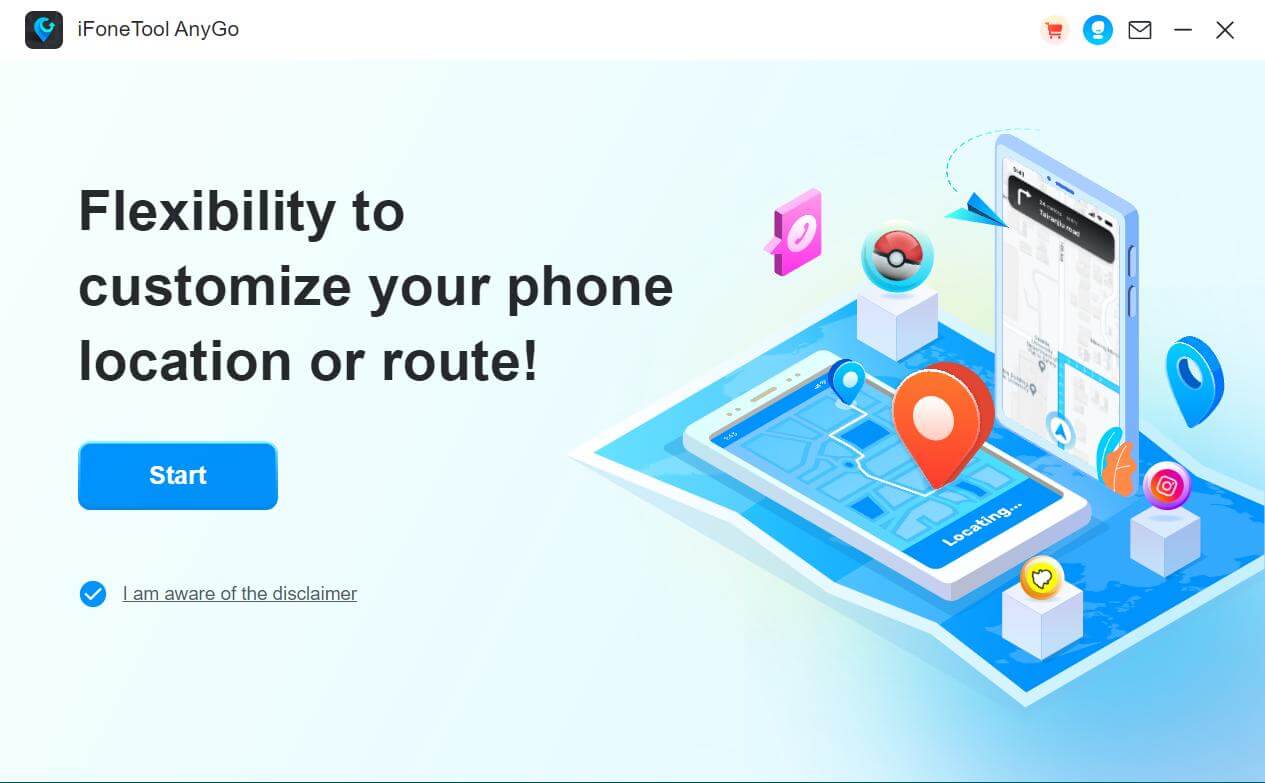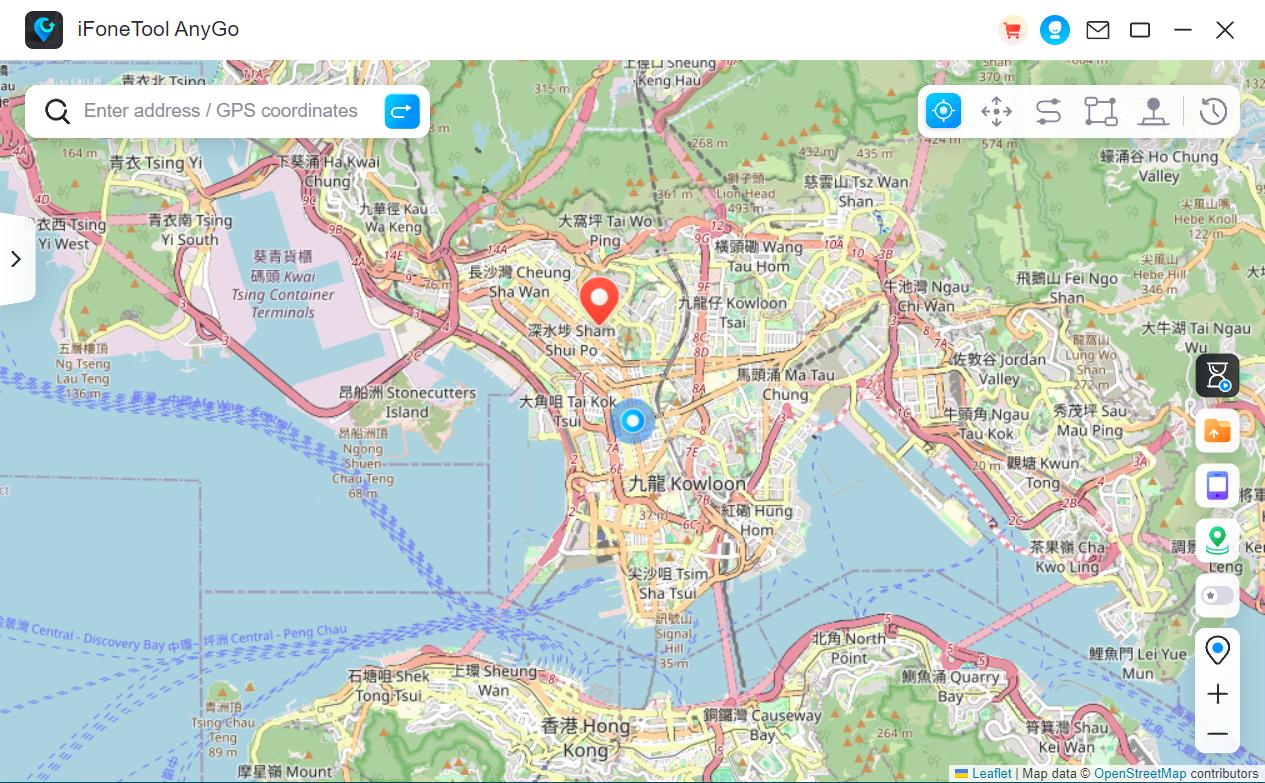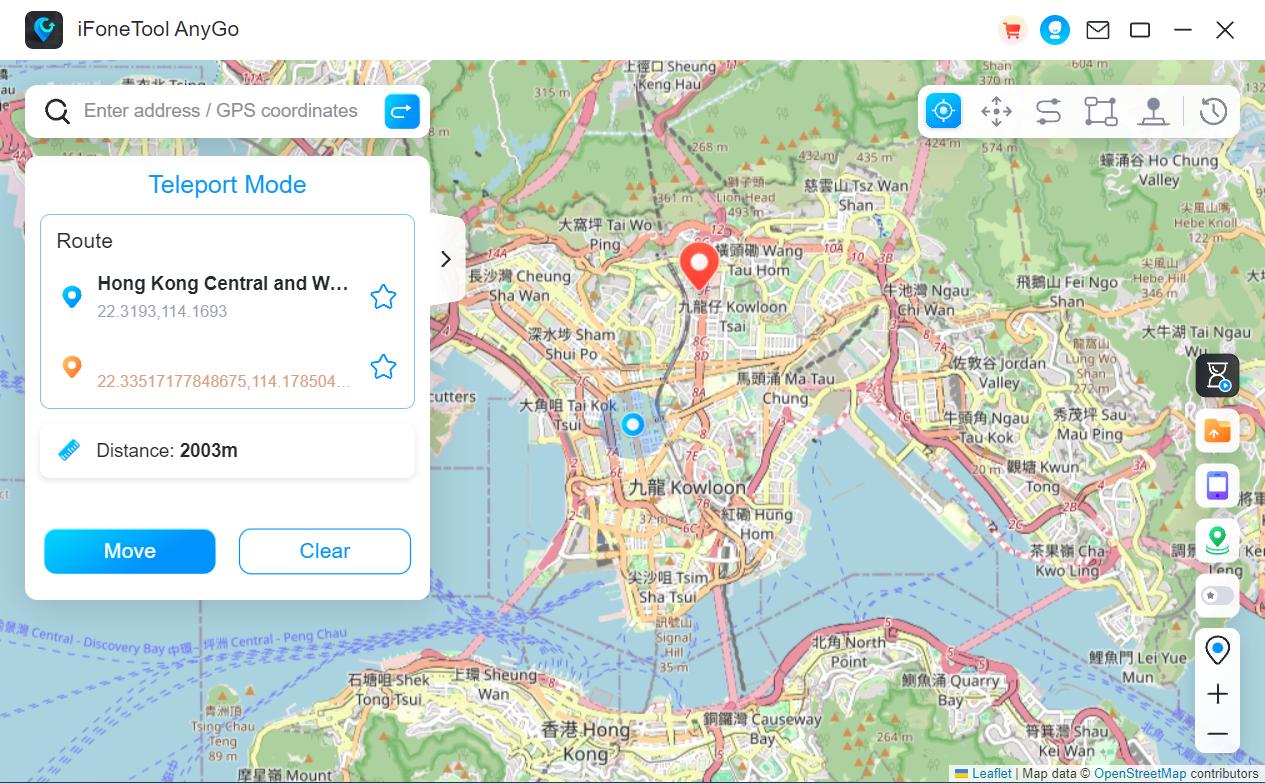How to change location on iPhone can be quite useful while you want to protect your privacy, access location-specific features in apps, or play location-based games. In this article, we will explore the benefit and detailed guide on how to spoof your location for free.
Let’s get started!
 Step 2: Connect your phone to your computer by USB, and then you will see your location on the map.
Step 2: Connect your phone to your computer by USB, and then you will see your location on the map.
 Step 3: Click the location you want to go on the map or enter where you’d like to go on the top left. And then click “Move“.
Step 3: Click the location you want to go on the map or enter where you’d like to go on the top left. And then click “Move“.

Table of contents
Can I Change the Location on iPhone?
Yes, it is possible to spoof your location on iOS. While Apple does not provide an official built-in feature to change your location, there are third-party tools available that can help you achieve this. These tools utilize various techniques to manipulate the GPS data sent by your iPhone, giving the appearance of being in a different location.
Why People Would Like to Fake Location on iPhone
There are several reasons why you might want to spoof your location on an iPhone:- Privacy and Anonymity: They can prevent websites, apps, and services from collecting their real location data, which may be used for targeted advertising or tracking purposes.
- Bypassing Geolocation Restrictions: Some websites and online services may restrict access based on the user’s geographical location. By spoofing their location, individuals can bypass these restrictions and access content or services.
- Gaming Benefits: While playing GPS-based games, players can gain advantages, such as accessing game events or features limited to specific regions, or reducing network latency by changing location.
- Testing and Development: Developers may need to test their applications or services with various location-based scenarios. Spoofing the location allows them to simulate different geographical conditions.
The Benefits and Considerations of Changing Location

Benefits of Fake GPS:
-
- Privacy Protection:
-
- Security Testing:
-
- Location Protection:
Considerations of Change Location:

- Terms of Service Violations: Changing your location may violate the terms of service for certain apps and services, potentially leading to account suspension or termination.
- Ethical Use: Fake gps responsibly and ethically. Respect the guidelines set by app developers and service providers to ensure fair play and compliance.
- Association with Illegal Activities: GPS faking is often linked to illegal activities such as piracy, smuggling, or theft. Manipulating GPS signals can deceive tracking systems and mislead law enforcement.
- Disruption of Services: GPS spoofing can disrupt essential services that rely on accurate GPS data, including aviation, maritime navigation, transportation, and emergency services. This can lead to accidents, navigation errors, or delays, posing risks to public safety.
- Device Security: Ensure that any location spoofing tools or apps you use are secure and reputable. Using unverified software can expose your device to malware or other security risks.
How to Use iPhone GPS Spoofing App Safely 🔥
iFoneTool AnyGo is a location spoofer software developed by iFoneTool Studio that allows users to change the GPS location on their iOS devices. It provides a simple and convenient way to simulate GPS movement or spoof location on an iPhone or iPad without the need for jailbreaking. With iFoneTool AnyGo, users can easily teleport their devices to any desired location in the world. This can be useful in various scenarios, such as testing location-based apps, playing location-based games, or protecting privacy by masking the real location.How to Use AnyGo Location Changer for iPhone?
Step 1: Download and install the AnyGo iOS spoofer App on your computer by clicking the download button. Open AnyGo and click the “Start” button. Step 2: Connect your phone to your computer by USB, and then you will see your location on the map.
Step 2: Connect your phone to your computer by USB, and then you will see your location on the map.
 Step 3: Click the location you want to go on the map or enter where you’d like to go on the top left. And then click “Move“.
Step 3: Click the location you want to go on the map or enter where you’d like to go on the top left. And then click “Move“.

How to Change Location on iPhone Using VPNs

- Step 1: Download and install a reputable VPN app from the App Store (like ExpressVPN, NordVPN, CyberGhost).
- Step 2: Launch the VPN app and sign in to your account.
- Step 3: Select a server location from the available options.
Faqs About Fake GPS for iOS
Can fake GPS be detected?
Yes, fake GPS locations can be detected through various methods and technologies, such as signal analysis, time synchronization checks, behavioral analysis and so on. You can learn more about on how to detect fake GPS here.
Is it illegal to change your location on iPhone?
It depends on intent and context. While using it for legitimate purposes may not violate laws, using it for fraud or to evade law enforcement typically is illegal. Laws vary by jurisdiction, and violating app terms of service can lead to account suspension. It’s essential to understand local laws and ethical considerations before engaging in location spoofing to avoid legal issues.How do I make Find My iPhone show a different location?
- Using a Secondary Device:
- Location Spoofing Apps:
- VPN Services:
- Using Xcode (for Developers):
How do I freeze the location on Find My iPhone without them knowing?
- Enable Airplane Mode:
- Disable Location Services:

- Disconnect from Network:
- Use a Secondary Device:
- Third-Party Location Spoofing Tools:
Does spoofing iOS location drain the battery faster?
Changing location on iphone location can cause a slight increase in battery drain, but the effect is generally minimal. While running location change software in the background may lead to some additional battery consumption, it typically remains within a normal range and is not excessively draining.✍ Conclusion:
By implementing themethods mentioned above, such as disabling Location Services, customizing app permissions,and using private browsing, you can take control of how to change your location on iPhone.
However, for a more comprehensive solution, consider using AnyGo location changer to effectively spoof your location in 1-click.

